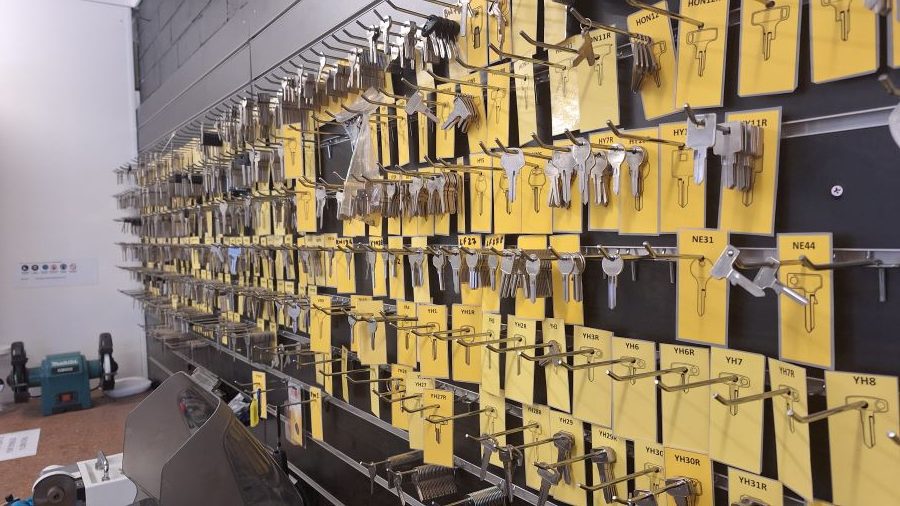
The Evolution of Car Keys: From Metal Blades to Smart Technology
Car keys have come a long way since the early days of motoring. What began as a simple piece of cut metal has evolved into a sophisticated security device packed with electronics, convenience features, and theft-prevention technology. Understanding this evolution not only highlights how far we’ve come, but also shows why modern locksmiths play such an important role in keeping drivers on the road.
The Early Years – Simple Metal Keys
In the early to mid-20th century, car keys were nothing more than a shaped piece of metal designed to fit a lock cylinder. They were purely mechanical, operating the ignition and door locks directly. These keys were inexpensive to replace and easy to duplicate—sometimes too easy, as car theft was relatively simple with basic lock-picking tools.
A locksmith’s role back then was primarily to cut a new key by hand, often working from just the lock itself if the original key was lost. Our skilled locksmith’s here at Mr Car Keys still do these from time to time, and we have a wide range of metal keys on hand.
The 1980s – Double-Sided & High-Security Keys
By the late 1970s and 1980s, manufacturers began introducing double-sided keys, which could be inserted either way, making them more convenient. Some high-end vehicles adopted high-security laser-cut keys with more complex grooves to deter theft and duplication.
Specialised key-cutting machines became essential, and locksmiths adapted quickly to handle more intricate designs.
The 1990s – Transponder Keys Change the Game
In response to rising car theft rates, the mid-1990s saw the widespread introduction of transponder keys. These contained a small chip that communicated with the car’s immobiliser system. Even if the metal key was cut correctly, the car wouldn’t start without the correct chip signal.
The great benefit of these new keys was that the incidences of car theft by “hotwiring” a car or copying keys were reduced. The transponder added an extra layer of protection.
Replacing a transponder key required both cutting the blade and programming the chip—something a professional automotive locksmith could do without the high costs and delays of a dealership.
2000s – Remote Keys & Key Fobs
The 2000s brought the rise of remote keyless entry and integrated key fobs. Drivers could lock, unlock, and even open the boot at the push of a button. Many keys combined the traditional blade with remote electronics in a single unit.
For specialist automotive locksmiths like Mr Car Keys, this meant investing in diagnostic tools to program remotes and sync them to the vehicle’s system, offering on-the-spot replacements for lost or damaged fobs.
Today – Smart Keys & Keyless Ignition
Modern vehicles now use smart keys and push-to-start systems. Instead of inserting a key, the driver carries a proximity fob that communicates wirelessly with the car. Some even allow smartphone-based access. These newer systems have features such as rolling security codes to prevent cloning of keys.
Again, this requires specialist programming equipment, security codes, and technical expertise—services that an experienced automotive locksmith can often provide quickly and more affordably than a dealer.
The Future – Digital & Biometric Access
We’re beginning to see cars that unlock with a fingerprint, facial recognition, or a smartphone app. As technology advances, so do the skills of our locksmiths. At Mr Car Keys, we are continually learning and developing to keep up with the changing nature of the cars on the market.
The evolution of car keys reflects the ongoing push for better security, greater convenience, and smarter technology. While modern keys are more complex than ever, a professional automotive locksmith can still replace, repair, and program them—often without the wait or expense of a dealership.
If you’ve lost your car key, need a spare, or your fob has stopped working, call Mr Car Keys on 0404621621 or submit an online enquiry at www.mrcarkeys.com.au to see how we can help you.

